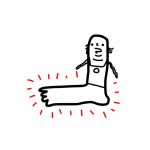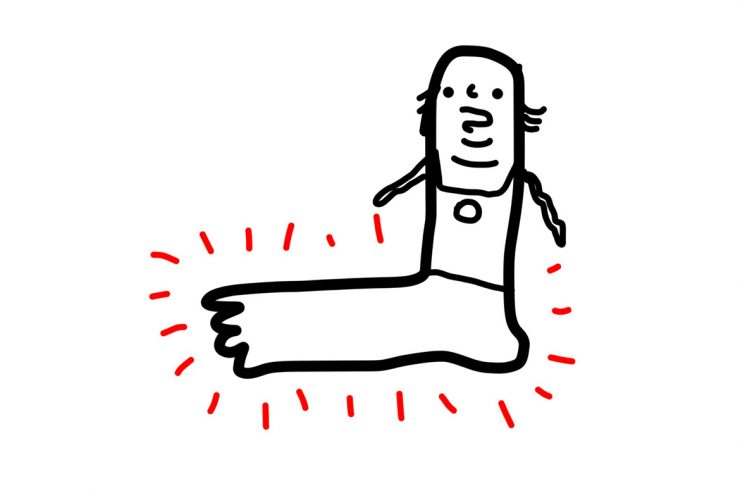
 This is the first installment in a new series on health issues that affect coffee professionals.
This is the first installment in a new series on health issues that affect coffee professionals.
Cafe manager Garrett Oden began noticing discomfort in his feet, knees, and back about a year ago. “I had these really cheap shoes that weren’t really doing so well,” says Oden. Without the time or money to look for an ideal pair of shoes, he ended up buying the same inexpensive ones that had been making him uncomfortable.
When it comes to foot pain, Oden is not alone. According to a 2014 American Podiatric Medical Association survey, 77 percent of US adults have experienced foot problems, but only 20 percent think about their foot health on a regular basis. For baristas, roasters, and other coffee professionals who spend most of their time on their feet, having healthy feet is vital to their job performance.
“Standing for long periods of time causes specific muscular-skeletal problems, especially tightness,” explains Dr. Susan Choe, doctor of podiatric medicine and founder of Elevate Podiatry. “I see a lot of people who develop tendonitis, aches, and pain just from being static.”
There are a number of ways to combat muscle fatigue in your feet. “The most important thing is to be mindful about the shoes you wear to work,” says Dr. Choe. “And the second thing is not to ignore symptoms.”
As Oden learned quickly, the shoes are important. Dr. Choe recommends finding a shoe that can pass a “bend test.” The stiffer the shoe is when you try and bend it, the better. “If you’re doing lots of standing, you want a shoe that is similar to a clog—really rigid and really supportive on the bottom,” she says.
In Oden’s case, he found that insoles placed into his sneakers went a long way in easing his discomfort. Additionally, the mats in his cafe helped with providing support. “When we got them, they made a pretty noticeable difference,” says Oden.
What else can one do to prevent foot pain? Dr. Choe suggests quick hourly stretches: “Lean forward, try and touch your toes, do a wall push or counter push, and do some calf stretching. Get moving while you’re working.”
In addition to the stretches, she also suggests using a foam roller, as well as doing general strength training, deep tissue massages, and using good posture. “I’m a huge fan of core exercises. If you have a strong core, you will hold your posture better and walk better,” says Dr. Choe.
The second most common issue that she sees in her patients that stand for long periods of time is dermatological. Because people tend to wear the same shoes all the time, they may risk developing fungal infections. “There are long hours where you’re sweating and not allowing your feet to breathe,” she adds.
Before she started wearing boots at her job, Seattle barista Meliza Chairez wore cheap, water-resistant shoes and felt as if her “feet weren’t taken care of.” There was a buildup of sweat from standing on her feet all day.
“Ideally, baristas should alternate two or three pairs of working shoes,” says Dr. Choe. For those who sweat more, switching into clean socks during your break, using powder, or finding moisture-wicking socks would also help to keep fungal infections at bay.
Is it possible to merge fashion and comfort? Chairez’s cafe has a very specific dress code. “I was told to wear boots: black, brown, or gray,” she recalls, adding that they also had to be leather. “I immediately thought about my dad—when he would go to work and wear these big industrial boots.” She worried that they would look horrible.
Chairez later learned that the code was flexible, allowing for a small heel and a variety of styles. In fact, the boots were more practical for Seattle weather. “Everyone wears boots up here,” she says. “And what’s really cool is that they’re easy to waterproof because they are leather.”
After switching over to boots, Chairez is no longer worried about her foot health. As an extra perk, she says, “When I get off work, I’m not embarrassed by the shoes having milk all over them. The leather is super-easy to clean.”
Whether you’re feeling the effects of being on your feet all day or not, Dr. Choe emphasizes the importance of preventative care. “The advice I would give to baristas who don’t have health insurance is: Do your best on your own to prevent issues,” she says. During breaks, do a few quick stretches to loosen up muscles instead of spending time hunched over your phone. Your feet will thank you.
Jenn Chen (@TheJennChen) is a San Francisco–based coffee marketer, writer, and photographer. Read more Jenn Chen on Sprudge.
The post From The Sole: Barista Health Starts In The Feet appeared first on Sprudge.
from RSSMix.com Mix ID 8200593 http://sprudge.com/barista-health-part-one-taking-care-of-your-feet-117512.html
No comments:
Post a Comment